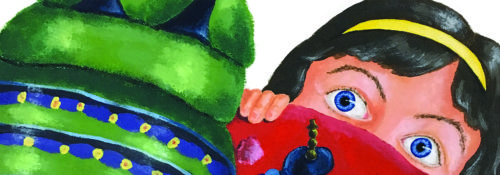
The Topsy-Turvy World of Alice in Wonderland: Finding Logic Amidst Chaos
By David Gaebler, Hillsdale College Associate Professor of Mathematics
What lessons does Alice’s Adventures in Wonderland teach children about growing up?
Alice’s experience of growing (and shrinking) is deeply disorienting. The world that she must navigate while she herself is changing is absurd, maddening, and unfair. One might wonder whether Lewis Carroll wants children to think that growing up is to be avoided at all costs! However, there is a more encouraging implication. The book demonstrates that grownups (beginning with the author but including parents as well) understand what growing up is like. They’ve all survived it, so the unfamiliar experience of growing and changing is more familiar than it seems at first to the individual.
Alice also demonstrates the power of persistence. Her innate curiosity and sense of justice are constantly being challenged in the strange new world, but she keeps forging ahead and doesn’t give up. Nor does she become self-absorbed or lose her ability to care for the other inhabitants of the world.
If you were teaching the book, what passages would you focus on with young readers and why?
The book is fairly short, so the King’s advice to “begin at the beginning and go on till you come to the end: then stop” could work. In choosing passages to highlight, it’s crucial to keep the sense of humor and play that pervades the book. Children may especially enjoy the passages in which Alice tries to relate her schooling to the problems she faces in life. The Duchess’s moralizing should be enjoyable for all readers. And the conversation in the Pool of Tears is always a hit, especially with kids who have cats or dogs of their own.
Why is this book popular among students and teachers of mathematics?
Lewis Carroll was a mathematician, so it is no surprise that his works have an enthusiastic following among math lovers, who recognize the author as a kindred spirit. On the surface, there are direct references to mathematics, such as the humorous list of “Ambition, Distraction, Uglification, and Derision” among Alice’s school subjects, and her various (often unsuccessful) attempts to measure and count objects throughout the story. Below the surface, there may be oblique references to 19th-century mathematical advances involving imaginary numbers, non-Euclidean geometry, abstract algebra, and more.
The affinity goes deeper than this, however. Alice’s way of thinking, speaking, and exploring the world rings true to mathematicians. Indeed, her experience is reminiscent of mathematical research. She finds herself in a bizarre world that seems chaotic, but that has an internal logic to it. Her attempts to make sense of it all are frustrating; there are exciting, small victories, but a full understanding remains tantalizingly out of reach.
Carroll’s use of language also reflects his mathematical mind. Math is itself a language, and many mathematicians enjoy wordplay and grammatical humor. Carroll’s sly puns are the sort that one is likely to hear among “off duty” mathematicians gathered around the water cooler or lunch table.
Click here for a downloadable (PDF format) Alice’s Adventures in Wonderland poster for use in your classroom.